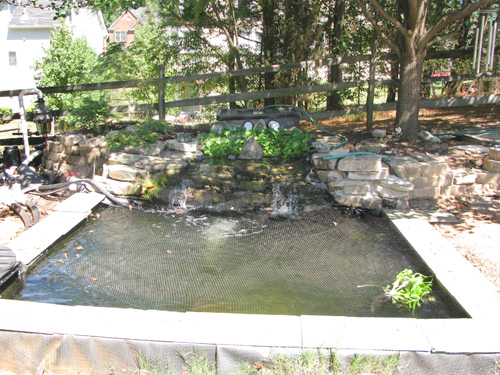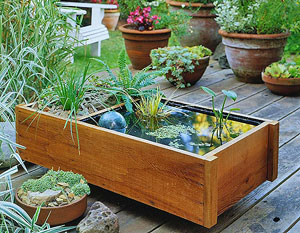The pond is still unfinished but here is a shot of its current state. You can see the rebuilt waterfall, veggie filter, black box bio filter (in back), and the waterco prefilter (on the left). You can see how the upper plants are still small but have grown about 50% this summer. With the cooler temperatures I should be able to finish the stonework as soon as my foot heals.
Fall cleaning for the filters
I disassembled the Waterco Multicyclone-50 Prefilter today and gave it a good cleaning inside. To remove the outer ring took a few light whacks with a rubber hammer to loosen it. I broke one of the ring tabs earlier in the year using a regular hammer. Once the ring was off, I gave the plastic housing a few taps to loosen the seal. I was then able to twist and lift the top grey section off of the clear housing. I did not disassemble the grey part. I rinsed the inside of the clear housing with a hose sprayer to remove most of the buildup that has solidified on the bottom. Then used a bit of elbow grease and paper towels to remove the caked on algae. Surprisingly there was no algae build up on the holes that make the vortex assembly work. Reassembled and tightened all down again. No noticeable leaks yet, but I will keep an eye on it for the next couple of days.
I also performed the weekly cleaning of the big box filter and removed almost all of the dead algae and debris from below the mat area. The screen on top of the lower shelf, below the J-Mats is doing a good job keeping large debris below the mats. Only the bottom mat had a layer of sludge at the edges.
I cleaned the small filter that runs to the jets by disassembling it, rinsing off its sponge filters, and hosing it out completely.
Refilled the pond and performed a watertest. All is good. Added more bacteria to help fight the algae and continue to maintain the 0 nitrates. Threw a couple of the overgrown hyacinth into the pond for the fish to nibble on.



